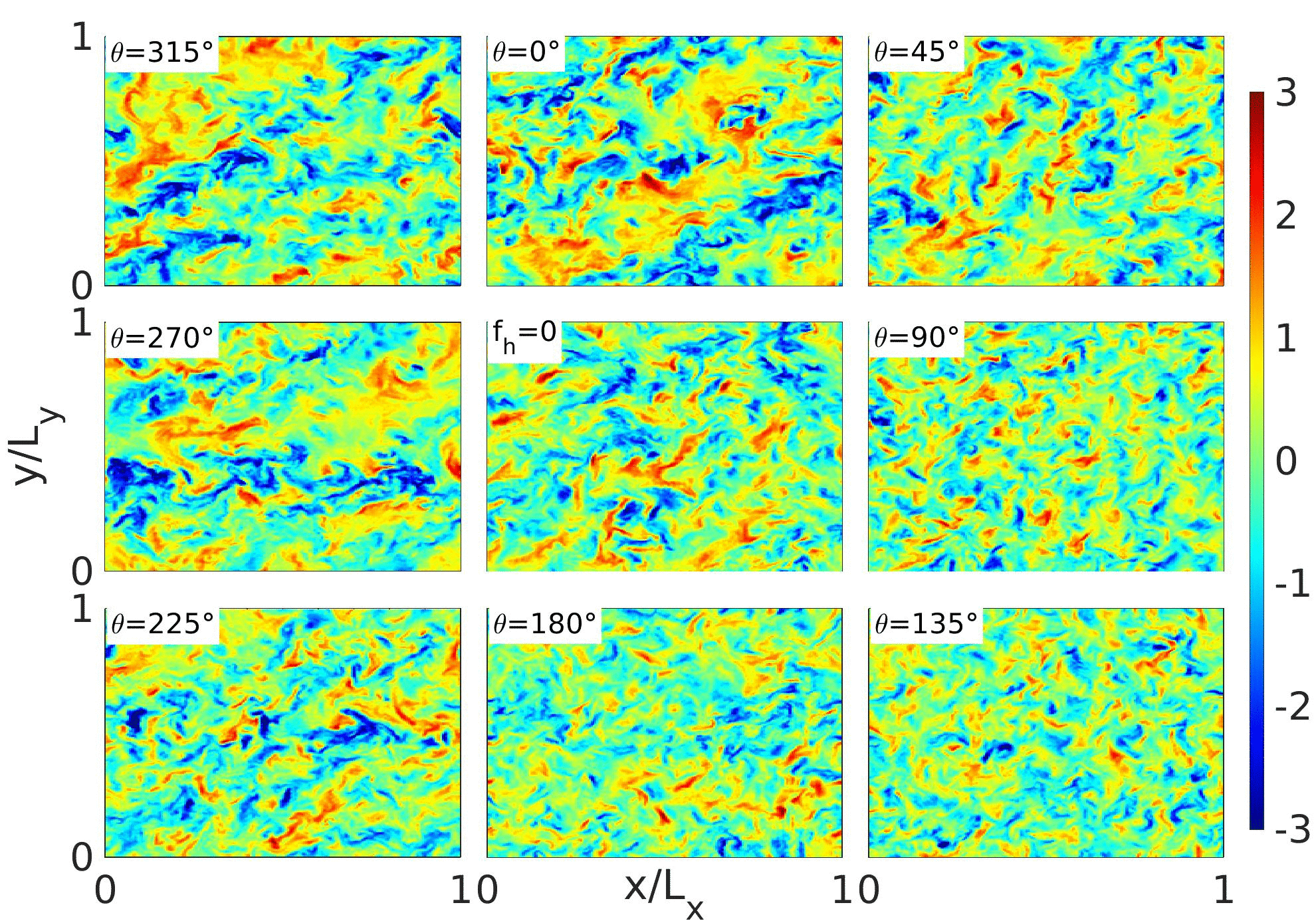Turbulent flows in the oceanic surface boundary layer (OSBL) are important to Earth’s climate and marine environment. They control the air–sea exchange of heat, momentum, and trace materials. OSBL turbulence is driven by surface atmospheric conditions including winds, waves, and heat fluxes and is modulated by stratification and the rotation of Earth. Using a large-eddy simulation model for oceanic surface boudnary layer, we found that when considering the horizontal (northward) component of Earth’s rotation, which is neglected in the momentum equation in circulation models, the mean flow, turbulence, and vertical mixing depend on the wind direction. The variability in turbulent flows to wind direction is different at different latitudes and in opposite hemispheres. We also found that the profiles of eddy viscosity, including its shape and its value, show a strong wind direction dependence for both stratified wind-driven and wave-driven Langmuir turbulence. Our study demonstrates that wind direction is an important parameter to upper-ocean mixing, though it is overlooked in existing ocean models.
Reference: Liu et al. (2018)
 |
|---|
| Normalized vertical velocity at z=-30m in the unstratified turbulent Ekman layer at 15 degree in the Northern Hemisphere (theta is the angle measured from the norward direction, e.g., northward wind for theta=0) |
 |
|---|
| Normalized vertical velocity at z=-30m in the unstratified turbulent Ekman layer at 15 degree in the Southern Hemisphere (theta is the angle measured from the norward direction, e.g., northward wind for theta=0) |
